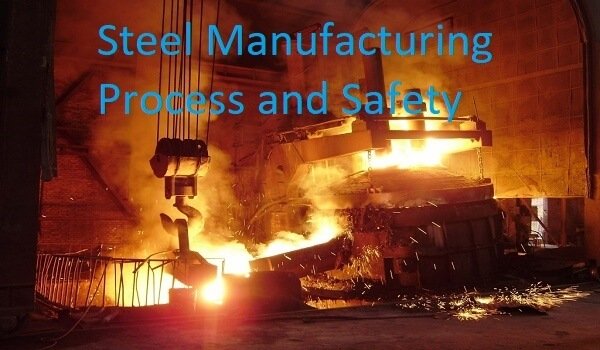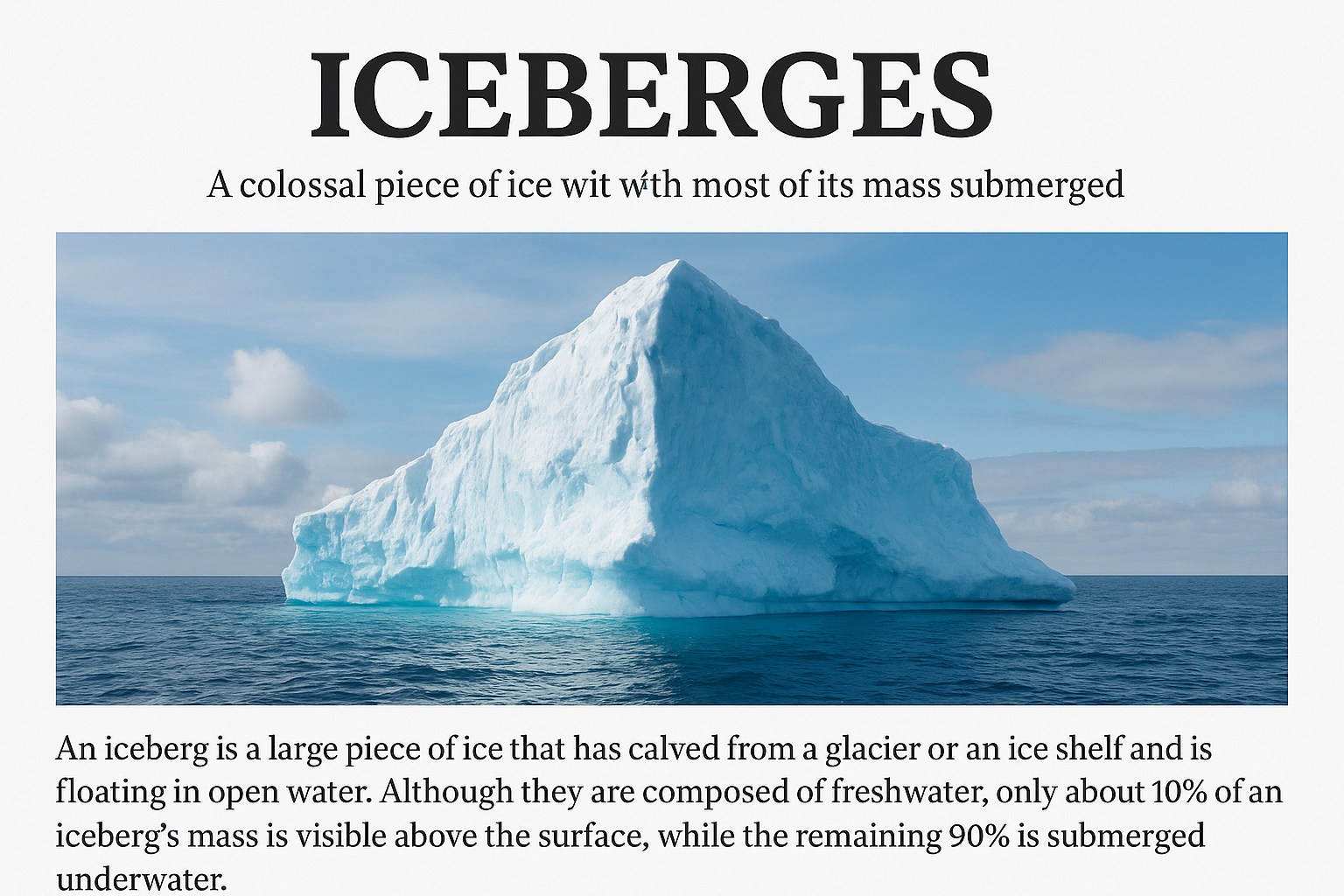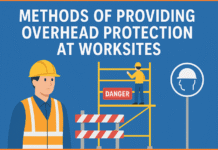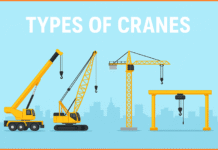Contents
NEED OF SAFETY IN ENGINEERING INDUSTRY
Man and Machine are two important ingredients of Industrial Safety. Man needs machines which many times bring hazards and accidents. This has created the need of industrial safety. It is most important to eliminate or minimize the contact between men and machines. Machines are the product of engineering and therefore engineering occupies the pioneering place in industrial safety. Without engineering industries, no machine, no guard and no mass production is possible. The history of machine is old and interesting, old engineering branches of India are mentioned and another historical Weapons and v hides expected by Yajuroeda and fixed kind movable machines in Kautilya’s times were not possible without engineering industry. Modern engineering technology is much advanced and many other industries are dependent on it.
In 1981 out of 72, 40,000 workers employed in all factories in India, workers employed in engineering factories were 24,41,000 i.e. 33.71% Thus about 30% labour force is employed in engineering industry in our country.
Types of Hot and Cold Processes
Metallurgical processes are two types Hot and Cold processes.
Hot processes are employed to melt ore to make metal, to refine metal and to mould metal in the required shape, section or grade, to make alloy, to weld or cut metal parts and to make tools, equipment, building materials, machine parts, structural parts etc. Fuel-fired or electric furnaces are used for these purposes. Chemical energy of fuel (gas, furnace oil, LDO, wood, coal, lignite, waste etc.) or electric energy is converted into heat in such furnaces.. Hot processes include melting, refining, smelting, moulding; forging, hot rolling, welding and cutting, brazing and soldering operations.
Cold processes are employed to further reduce or change the shape, size or section of the hot rolled,
Forged or moulded metal parts, cut into pieces, drill, bore grind surfaces, press, punch slot, shear, cut, bend shape the metal parts. A variety of machines and machine tools are used for these purposes. Hand and foot operated presses, power presses, hydraulic or pneumatic presses, shearing machines, press brakes, cold rolling mills’, forming rolls, wire drawing machines and various machine tools like lathe, boring m/c, grinding rule and modern computerized controlled machines are used in engineering industry.
Types of Furnaces, Uses and Safely Measures
They are classified as under-
Classification based on Structure
Technologically metallurgical furnaces are classified as melting or heating furnaces. Melting furnaces are employed to make metals from ores and re-melt metals for obtaining the desired properties. Material processed in melting furnaces changes their state of aggregation.
Heating furnaces are employed to heat materials for roasting (limestone, magnetite, refractoriness, potteries etc) or drying (foundry moulds, ore, sand etc.) and also for increasing the plasticity of metals before plastic working. They are also used for heat treatment of to change the metal structure. Material-sin heating furnaces remain in the same state.
Furnaces may be regenerative or recuperative according to the method the heat waste gases is utilised.
Classification based on Heat Generation:
Furnaces are also classified according to the principle of heat generation i.e. either fuel-fired furnaces where heat is generated from chemical energy of fuel or electric furnaces where heat is generated from electric energy.
In fuel-fired furnaces heat is generated by burning fuel on the furnace hearth. They are of two types flame furnaces and shaft furnaces. In flame (rever-beratory) furnances, the material to be burnt occupies only a small portion of the reaction chamber volume, the rest being occupied by flames and combustion products. In shaft furnaces, all the space is filled with loose charge materials which include lumpy solid fuel.
In steelmaking furnaces (converters) the chemical energy of molten metal is also converted unto heat through combustion of impurities present in them. The heat evolved is evenly distributed over the whole mass of the molten metal.
Heat for refining the bath to produce steel is derived from the oxidation of carbon and other elements and no external source of heat is required.
In oxygen process steelmaking furnace, initially oxygen is blown on to the surface of a bath of molten pig iron and steel scrap.
Types of electric furnaces are:
- Electric-arc and plasma furnaces, single, two or three phase furnaces.
- Induction furnaces.
- Dielectric heating plants.
- Resistance furnaces.
- Electron-beam furnaces, i.e. micro-wave and infra-red.
Classification based on Operating Mode:
Heat transfer from a heat carrier (flame, electric arc) to the surface of material is mainly through thermal radiation and convection.
Heat transfer from the surface of material into the depth of material occurs predominantly by conduction. But with heated liquids, convective heat transfer is also possible.
Convective mode is typical of low-temperature heat-treatment and drying furnaces. This mode is also employed in heating baths in which a hot liquid is the heat carrier.
Layer wise mode is used in the processing of lumpy materials mostly in shaft furnaces. In such layer wise mode, all three kinds of heat transfer-radiation, convection and conduction-are interlinked so closely that practically cannot be separated from one another. There are three types of layer – dense (filtering) layer, fluidised bed layer and suspended layer of the processed material.
Modern complex thermal plants are usually composed of furnace proper (reaction chamber, burners, electrodes or resistors) and auxiliary equipment (waste gas heater, ventilator, exhauster, stack, valves, gates etc.).
Others:
So far we have discussed the types and uses of furnaces. It is relevant to consider kiln used for cement, lime, ceramic (brick, tile, refractory) and drying purposes and ovens for drying (moisture removal), curing, baking, decorating and solvent evaporation (paint drying).
Hazards in steel manufacturing:
Main hazards while working with furnaces, kilns and oven are as under:
- Burns due to contact with hot surfaces.
- Burns due to contact with hot product, fuel or electricity.
- Splashing or bubbling of molten metal.
- Contact of cooling water with the molten metal or slag (e.g. induction furnace) and explosion due to sudden steam generation.
- Fire or explosion due to leakage of fuel.
- Carbon monoxide from fuel gas or products of combustion.
- Explosion due to hydrogen.
Precautions to be followed are as under:
- Good insulation over hot metal surfaces.
- Protective clothing for head, face, hands and feet.
- Respirators, safety eye glass (plain or tinted) for protection against dust, fumes, toxic gases and glare.
- Exhaust hoods and fans to draw dusts, fumes, gases etc.
- Good ventilation to vent off hazardous waste generated from scrap charged alloys and fluxes.
- Hot work permit before allowing any workers to enter any hot chamber. Insurances of cooling, fresh air ventilation and lighting necessary.
- Interlocking to cut off fuel supply in case of flame failure.
- Precautions while lighting fuel or burner to prevent flash back, fire or explosion.
- Training and awareness programmes for workers.
- Provisions of drinking water and shielding to avoid heat disorders.
- Flameproof electric fitting with solvent drying ovens. PPE against eye and skin irritation or respiratory disorders.
- Precautions against free silica, asbestos etc., while cleaning and maintaining furnaces. Area monitoring and medical surveillance of such hazardous exposures.
Steel Manufacture, Hazards and Safety Measures:
Iron occurs very abundantly constituting about 4.7% of the earth’s crust. It is the fourth in abundance (first three are oxygen, silicon and aluminium) amongst all the elements. Amongst metals, its abundance is second only to aluminium.
The most important iron ores are iron oxides, carbonates and sulphides.
Three commercial varieties of iron are cast iron, wrought iron and steel. They differ in their carbon and phosphorous content.
Cast iron is the least pure form of iron containing 2.5 to 4.5% carbon with some sulphur, phosphorous, silicon and manganese. Wrought iron is the purest from of iron containing less than 0.5% carbon and other impurities.
Steel comes in between cast iron and wrought iron. It contain 0.02 to 1.5% carbon and some manganese. Hardness of steel increases with increase in carbon content. Sometimes other elements such as chromium, silicon, nickel, tungsten, vanadium and molybdenum are added to make special steel. Main three grades of steel are as under:
Low carbon (mind) steel – 0.02 to 0.3 % carbon
Medium carbon steel – 0.3 to 0.7 % carbon
High carbon steel – 0.7 to 1.5 % carbon
There are many special purpose types of steel in which one or more alloying metals are used, with or without special heat treatment. Some special alloy steels are given below:
| Name | Composition | Properties | Uses | |
| 1. | Chrome steel | 2-4% Chromium | High tensile strength | Ball bearing, cutting tools. |
| 2. | Tungsten steel | 10-20% Tungsten | Retains hardness even at high temperatures. | Cutting tools for high speed lathes. |
| 3. | Stainless steel | 18% Chromium & Nickel | Resists corrosion. | Utensils, ornamental pieces. |
| 4. | Manganese steel | 10-18% Manganese | Very hard and resistant to wear. | Grinding machinery safes. |
| 5. | Nickel steel | 2.5-5% Nickel | Resists corrosion, hard and elastic. | Wire cables, gears, drive shafts. |
| 6. | Molybdenum steel | 0.3-3% Molybdenum | Retains corrosion even at high temperatures. | Cutting tools and axles. |
| 7. | Invar | 36% Nickel | Practically no coefficient of expansion. | Meter scales and pendulum rods. |
| 8. | Silicon steel | 15% Silicon | Extremely hard and resistant to acids | Pumps and pipes for carrying acids. |
Carbon steel is the most common, cheapest and most versatile metal used in industry. It has excellent ductility, permitting many cold-forming operations. It is also very weld-able. It’s normal tensile strength 345 to 485 MPa (50000 to 70000 lbf/in2) permits good ductility. Higher strength is achieved by cold work, alloying and heat treatment.
The temperature at which steel begins to undergo creep, is important. The threshold temperatures at which creep begins are:
Mild steel – 400 degree centigrade.
Low alloy steel – 500 degree centigrade.
Austenitic stainless steel – 600 degree centigrade.
Steel production is an index of national prosperity and the basis of mass production in many other industries such as construction, engineering, automobiles, shipbuilding etc.
Manufacture of Steel:
Steelmaking started in 1855 with invention of melting process (Bessemer), open hearth process (1864) and the electric furnace (1900). Thereafter the LD (Linz-Donowitz) process by oxygen lance, made it possible to manufacture high quality steel with low production cost.
For large scale production of steel three methods are employed:
- The Bessemer Process.
- The Open Hearth Process.
- The Electric Furnace Process.
These methods are based on removing impurities from pig iron and them adding calculated amounts of carbon, manganese, chromium and other elements.
Forth method, known as Cementation Process is used to manufacture steel in small quantities. It is based on the addition of carbon to wrought iron.
- In Bessemer process: molten pig iron taken directly from the blast furnace is run into Bessemer converter which a pear-shaped furnace is having holes to blow air at bottom and mouth at top. It can be tilled on horizontal axis.

As the air passes upward through the molten metal, it oxidises the impurities (manganese, silicon, carbon) present in the pig iron.
2Mn +O2 → 2MnO
Si +O2 → SiO2
2C +O2 → 2CO
MnO and SiO2 combine to give manganous silicate slag.
CO burns with a blue flame at the mouth of the converter. When the whole of carbon is oxidised, the blue flame dies out. The requisite amount of carbon is then added to convert iron into steel. At the end, the converter is tilted to pour out the molten steel.
If cast iron, from which steel is to be obtained, contains much phosphorous, the converter is lined with lime(CaO) and magnesia (MgO) instead of silica. Some lime is also added to the charge. The P is oxidised to P2O5 which them forms a slag of calcium phosphate.
4P + 5O2 → 2P2 O3
3caO + P2O5 → Ca3(PO)2
The slag is ground and used as a fertiliser.
(2) In Open Hearth Process: a mixture of cast iron, scrap iron, iron ore and lime is melted in an Open Hearth furnace. The hearth is lined with silica (SiO2) or calcined dolomite depending on the nature of impurities (C, Si, S P) present in cast iron. Heating up-to about 1500 Degree centigrade is continued for 8 to 10 hours. Impurities get oxidised and them react lime to from slag.

SiO2 + CaO →CaSiO2 slag
P2O5 + 3CaO→ Ca3(PO4)2 slag
Sample are taken from the hearth from time to time and analysed. The carbon content is adjusted and other metals may be added if special steel is to be made. The finished batch of molten steel is removed by tilting the hearth.
Advantages of the Open Hearth Process over the Bessemer Process are:
- Steel obtained is of better quality.
- Fuel economy by regenerative system of heat economy.
- Product composition and temperature can be well controlled.
- Scrap and iron ore can be directly changed in-to steel.
- No loss due to air blast through the molten metal.
(3) The Electric Arc Furnace Process: This process involves the setting up a carbon arc. Electrodes are held vertically and the charge of cast iron, scrap iron and iron ore (haematite), mixed with fixed quantity of lime is added in between.

The furnace is usually lined with dolomite. Impurities (C, Si, S P) are oxidised. Phosphate and other slag (being lighter remain at the top) are poured off by tilting the furnace. After this a charge of coke, lime and sand is added.
CaO + FeS→ FeO + CaS slag
FeO is reduced to metal by coke (carbon).
As phosphorous and sulphur are almost completely removed, the steel obtained is of good quality. High grade alloy steel can also be obtained by adding requisite alloying metal.
(4) Cementation Process: Bars of wrought iron surrounded by carbon, are heated in fire brick boxes over 1000 degree centigrade for about 10 days. The carbon from the iron surface diffuses towards interior and converts iron into steel. Blister steel formed is melted in graphite crucibles till removal of blisters. Other metals are added to confer hardness, tenacity and resistance to corrosion. The steel obtained is known as Cementite Crucible Steel and used to make high grade tools such as razors, chisel etc.
Hazards and Safety Measures:
Main hazards in steel manufacture are as under:
- Burns due to molten metal, its splashes while tapping, pouring, tilting, falling of ladle and sparks or spatters.
- Explosion in metal or slag due to water insertion and spattering of hot material over a wide area.
- Explosion risk in storage, transport and use of oxygen.
- Accident due to heavy and rail mounted furnace chargers.
- Breakage or failure of lifting machines, tackles, ladles, ingots, overhead travelling cranes and unsafe access.
- Obstructed floors, platforms and stairs with materials and implements.
- Accidents due to material handling.
- Poisoning due to Carbon monoxide in fuel gases (converter gas 68-70%, blast furnace gas 20-30% and coke oven gas 5-10%) or its leakage from the furnace, pipeline, water-seal valves, repair work.
- Excessive heat, heat-stroke and heat cramps (lack of salt due to excessive perspiration) to the workers.
- Dust generation e.g. sintering near furnaces and in ingot –making.
- Dense fumes while using oxygen lances or its use in open hearth furnaces.
- Risk of silicosis to men engaged in lining, relining and repairing, furnaces or ladles with refractory bricks which may contain 80% silica. Silicate content causes pneumoconiosis.
- Eye and ear damage due to glare, high noise of blowers and electric furnaces.
To protect the workers from above hazards, following safety measures are necessary:
- Engineering measures like guarding and fencing of dangerous machine parts, floors, stairs and platforms, lifting machine, tackles, transport vehicles and safe work practices.
- Good ventilation, lighting and housekeeping.
- Efficient exhaust ventilation for removal of dusts, fumes, gases etc.
- CO detectors should be used to ensure safety. Self breathing or air line respirators should be worn while doing this manually. Fixed CO detectors with alarm are desirable at crucial points.
- Cold drinking water and salt provided to workers working in very hot environment.
- Rotation of workers after short duration work in hot process.
- Ergonomic design of man-machine-environment relationship.
- Pre-employment medical examination to select suitable persons for hard or hot work, crane work etc. TB disqualifies from work with refractory materials and heart diseases, obesity and chronic gastro-enteritis disqualify from work in hot environment.
- Periodical medical examination of workers exposed to heat stress, dust and high noise.
- First-aid centre, Ambulance with necessary medical facilities.
- Safety organisation including safety committees, accident investigation and discussion, safety programmes and workers training is essential.
- Proper supervision.





